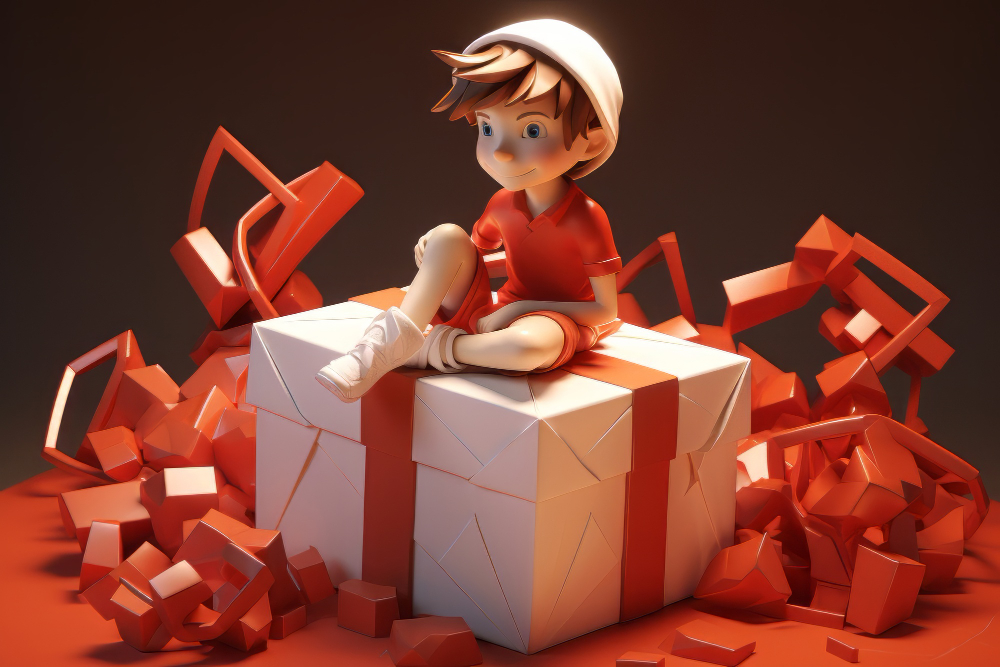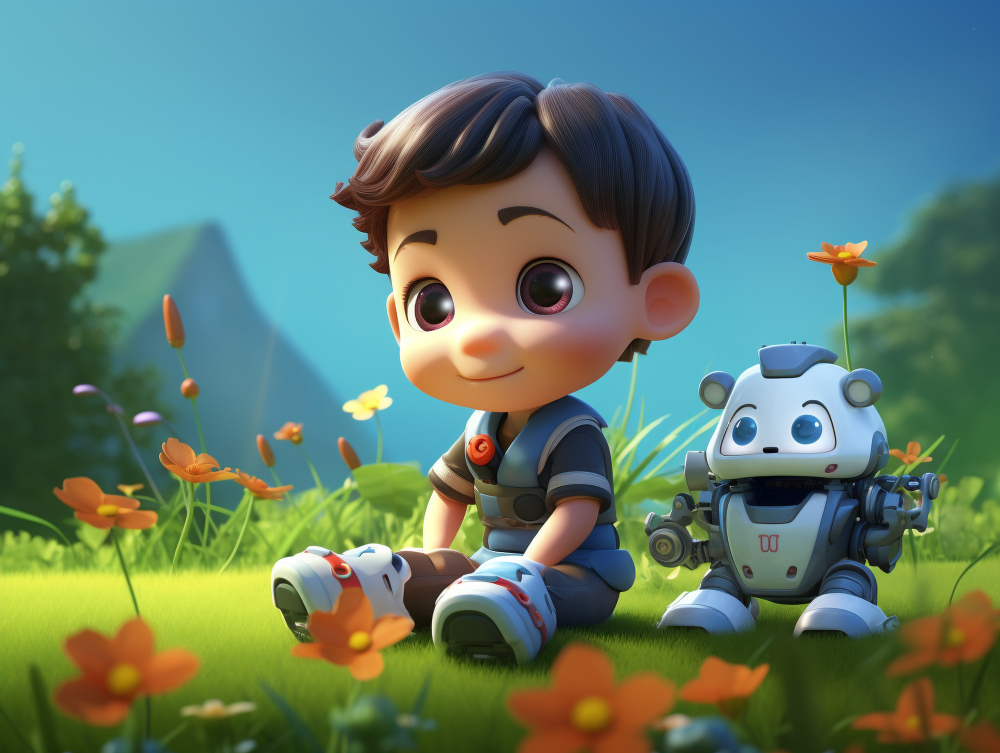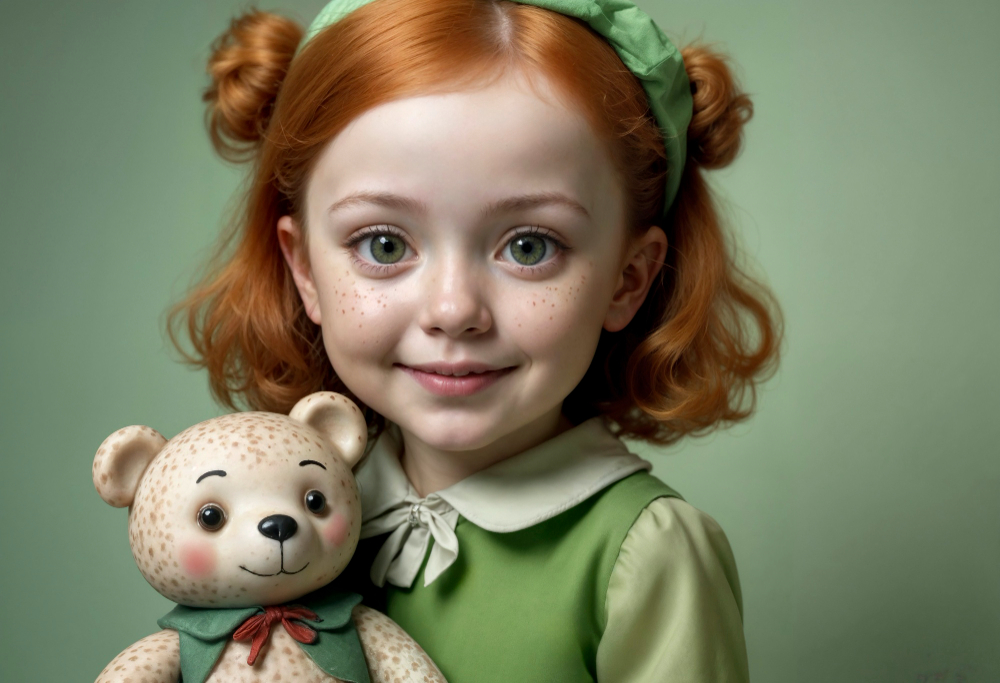Creating a 3D character is a rewarding but complex process that involves several stages, from initial concept design to the final high-poly model. In this blog, we will walk through the entire journey of creating simple character 3D models, explaining how to transform an object or basic shape into a detailed and realistic character model. Whether you’re a beginner or an experienced character artist, this guide will provide valuable insights into the world of 3D character creation.
1. The Basics of Creating Characters
Before diving into the intricacies of 3D modeling, it’s essential to understand the fundamentals of creating characters. The process begins with the basic shape—the foundation upon which you will ultimately build your character.
Basic Shape
The initial basic shape is crucial as it sets the foundation for your entire character model. Start by creating simple geometric forms that represent the main parts of your character, such as the head, torso, and limbs. These shapes will guide the future overall structure and proportions of your character. When sculpting the basic shape, focus on getting the proportions right, as this will make the detailing process much smoother later on.
Sketch and Concept Design
Before you start creating your 3D character model, sketch out your ideas. Concept design helps you visualize your character’s appearance and personality. Use your sketches as references when you start modeling in your preferred 3D software. This can include programs like Blender, Max, or Maya. Consider various elements such as clothing, accessories, and facial features. These sketches do not have to be perfect but should provide a clear vision of the final character design.
Principles of Good Character Design
When designing characters, especially those created for fantasy or game environments, consider the following principles:
- Silhouette: A unique silhouette makes a character easily recognizable even from a distance.
- Color Palette: Use a distinct and limited color palette to make the character stand out.
- Proportions: Exaggerated proportions can add to the character’s personality and appeal.
- Details: Small details can convey a lot about the character’s background and role in the story.
2. The Modeling Process
With a solid concept in place, it’s time to move the project onto the actual modeling phase. This involves transforming your basic shape into a more detailed 3D model.
Low Poly to High Poly Transition
Begin with a low poly model to establish the overall shape and proportions of your character. This low poly version is easier to manipulate and allows you to focus on the character’s silhouette. Once you’re satisfied with the body and basic structure, you can start refining your model into a high poly version. In the high poly stage, add more polygons to your model to capture intricate details such as wrinkles, folds in clothing, and facial features.
Adding Detail
As you transition from low poly to high poly, add more details to your character. This includes defining muscle structure, facial features, hair, clothes, and other intricate aspects. Use your 3D software’s tools to enhance the detail level of your model. Tools like sculpting brush in Blender or ZBrush can be extremely useful for adding fine details and textures to your character. Pay attention to the gestures and position of your character to ensure natural and realistic poses. Remember to constantly refer back to your concept design to ensure consistency. Don’t be afraid to start from scratch if necessary to achieve the desired look.
Advanced Techniques
For those looking to push their models further, consider incorporating advanced modeling techniques such as:
- Sculpting: Use software like ZBrush for highly detailed sculpting of features like skin textures and fine details.
- Retopology: After sculpting, use retopology techniques to create a cleaner and more manageable mesh for animation.
- Procedural Texturing: Tools like Substance Painter allow for procedural texturing, which can save time and provide high-quality results.
3. Texturing and UV Mapping for Character Model
With the character model complete, it’s time to add textures and colors. This stage is crucial for bringing your character to life and making it look realistic.
UV Mapping
UV mapping involves unwrapping your 3D model into a 2D plane so that textures can be accurately applied. Ensure that your UV map is clean and well-organized to avoid texture distortions. Tools like Substance Painter are highly effective for painting textures directly onto your character model. Pay attention to the seams and make sure that textures blend and align correctly across different parts of the model.
Textures and Materials
Apply textures and materials to your model to add realism. This can include skin textures, clothing patterns, and other surface details. Make sure to adjust the material properties to achieve the desired look for your character. Consider using different types of maps, such as normal maps, bump maps, and specular maps, to enhance the depth and realism of your textures. Experiment with different materials to see what works best for your character, whether it’s metallic, fabric, or skin.
Tools and Tips
- Substance Painter: Great for painting textures and adding realistic wear and tear.
- Photoshop/GIMP: Useful for creating custom texture maps and editing existing ones.
- Blender: Offers comprehensive UV mapping and texturing tools.
4. Rigging and Animation
Once your character is textured and ready, it’s time to add functionality for animation.
Rigging
Rigging involves creating a skeleton for your character, which allows it to move and pose. This process includes placing bones and setting up control points to animate various parts of your character, such as the limbs and facial expressions. Rigging can be complex, so take your time to ensure that the rig is clean and functional. Proper rigging is essential for smooth and realistic animations.
Animation
With your character rigged, you can now animate it. Whether you’re creating animated sequences for a game or preparing a character for a film, animation is a crucial step. Use your rig to pose your character and create animations that bring it to life. Consider using motion capture data to achieve realistic movements or manually keyframe animations for more stylized actions. Pay attention to the weight and balance of your character to ensure natural-looking movements.
Tools and Techniques
- Blender/Maya: Both offer robust rigging and animation tools.
- Mixamo: Provides pre-made rigs and animations that can be applied to your characters.
- Motion Capture: Using mocap data can save time and provide highly realistic animations.

5. Exporting and Final Touches
After completing the modeling, texturing, and animation, it’s time to prepare your character for export.
File Formats
Export your 3D models in appropriate formats such as OBJ or FBX, depending on your project’s requirements. Ensure that all textures and animations are correctly linked to avoid issues in the final render. Different platforms may have specific requirements, so double-check the export settings.
Final Touches
Add any final touches to your character. This may include adjusting the textures, refining the details, and ensuring that the model performs well in its intended application, be it a video game, animated film, or virtual reality environment. Test your character in different lighting conditions and poses to ensure it looks good from all angles.
6. Tools and Software
Selecting the right tools and software can greatly enhance your character creation process. Here are some popular options used by character artists:
- Blender: A versatile and free 3D creation suite for modeling, texturing, and animating.
- Substance Painter: Ideal for creating detailed textures and painting directly onto your 3D model.
- Max: Known for its robust modeling and animation features.
- Maya: A comprehensive tool for advanced character modeling and animation.
- ZBrush: Excellent for detailed sculpting and high-resolution modeling.
7. Inspiration and Learning Resources
Continuously seek inspiration and improve your skills. Look for tutorials, free online courses, and community forums to stay updated on the latest techniques and trends in character modeling. Websites like ArtStation, YouTube, and various online platforms offer valuable resources and insights.
Online Courses and Tutorials
If you’re interested in just starting, consider enrolling in an online course focused on creating characters. These courses often cover everything from basic shape creation to advanced high poly model techniques. Platforms like Udemy, Coursera, and CGMA offer courses taught by industry professionals.
Community and Networking
Engage with other character artists and join online communities to share your work, receive feedback, and learn from others. Networking and talking with professionals can provide new perspectives and opportunities for growth. Participate in forums like CGSociety, Polycount, and Reddit’s r/3Dmodeling.
Study successful 3D characters from popular games, movies, and TV shows. Analyze the techniques and art styles used by professional artists. Look at different genres, from realistic characters in AAA games to stylized figures in indie games and animated films.
8. Advanced Techniques for Character Artists
For those looking to take their skills to the next level, exploring advanced techniques can be incredibly beneficial. Here are some methods to consider:
Procedural Texturing
Using procedural textures allows you to create complex and dynamic surfaces without the need for manual painting. Tools like Substance Designer enable you to generate textures based on algorithms, which can then be applied to your 3D models.
Photogrammetry
This technique involves creating high-detail 3D models from photographs. It’s particularly useful for achieving realistic textures and details. Software like Agisoft Metashape can help you create highly detailed models from a still image or series of photos.
Sculpting and Retopology
Sculpting in ZBrush allows you to add incredible detail to your high poly model. Once you’ve sculpted your character, use retopology techniques to create a clean, animation-friendly mesh. This process generally involves simplifying the geometry of your model while maintaining a high level of detail.

Conclusion
Creating a simple character 3D model from a basic point of shape to a high poly model is a detailed and rewarding process. By following the steps outlined in this guide, you can bring your character concepts to life with precision and creativity. Remember, practice and patience are key to mastering 3D character modeling. Ready to take your character creation skills to the next level? Join 3DAiLY’s community of character artists and access top-notch resources, tutorials, and courses designed to help you create stunning 3D characters. Whether you’re working on a game, an animated film, or just for fun, 3DAiLY has everything you need to succeed. Sign up today and start bringing your characters to life!



